Abstract
1. The rate of gluconeogenesis from propionate in rat kidney-cortex slices was stimulated up to 3·5-fold by dl-carnitine and by bicarbonate, and was inhibited by inorganic phosphate or high concentrations of propionate (above 3mm). 2. The stimulatory effect of carnitine was dependent on the bicarbonate concentration and could be replaced at low propionate concentration by addition of 25mm-bicarbonate–carbon dioxide buffer. At low bicarbonate concentration the carnitine concentration can be rate-limiting. 3. All observations are in accordance with the view that the action of carnitine is in principle the same as that established for other fatty acids in other tissues, namely that carnitine promotes the appearance of propionyl-CoA within the mitochondrion by acting as a carrier. 4. The accelerating effects of carnitine and bicarbonate and the inhibitory effect of phosphate can be explained on the basis of the known properties of key enzymes of propionate metabolism, i.e. the reversibility of the reactions leading to the formation of methylmalonyl-CoA from propionyl-CoA. 5. 5mm-Propionate caused a five- to ten-fold fall in the free CoA content of the tissue. This fall can account for the inhibition of respiration and gluconeogenesis caused by high propionate concentration. 6. Relatively large quantities of propionyl-l-carnitine (15% of the propionate removed) were formed when dl-carnitine was present; thus the `activation' of propionate proceeded at a faster rate than the carboxylation of propionyl-CoA. The metabolism of added propionyl-l-carnitine was accompanied by glucose synthesis. 7. The appearance of radioactivity from [2-14C]propionate in both glucose and carbon dioxide was as expected on account of the randomization of C-2 and C-3 of propionate, i.e. the formation of succinate as an intermediate. 8. The maximum rate of glucose synthesis from propionate (93·3±3·3μmoles/g. dry wt./hr.) was not affected by dietary changes aimed at varying the rate of caecal volatile fatty acid formation in the rat. 9. Inhibition of gluconeogenesis by high propionate concentration was not found in those species where the rate of caecal or ruminal propionate production is high under normal conditions (rabbit, sheep and cow).
Full text
PDF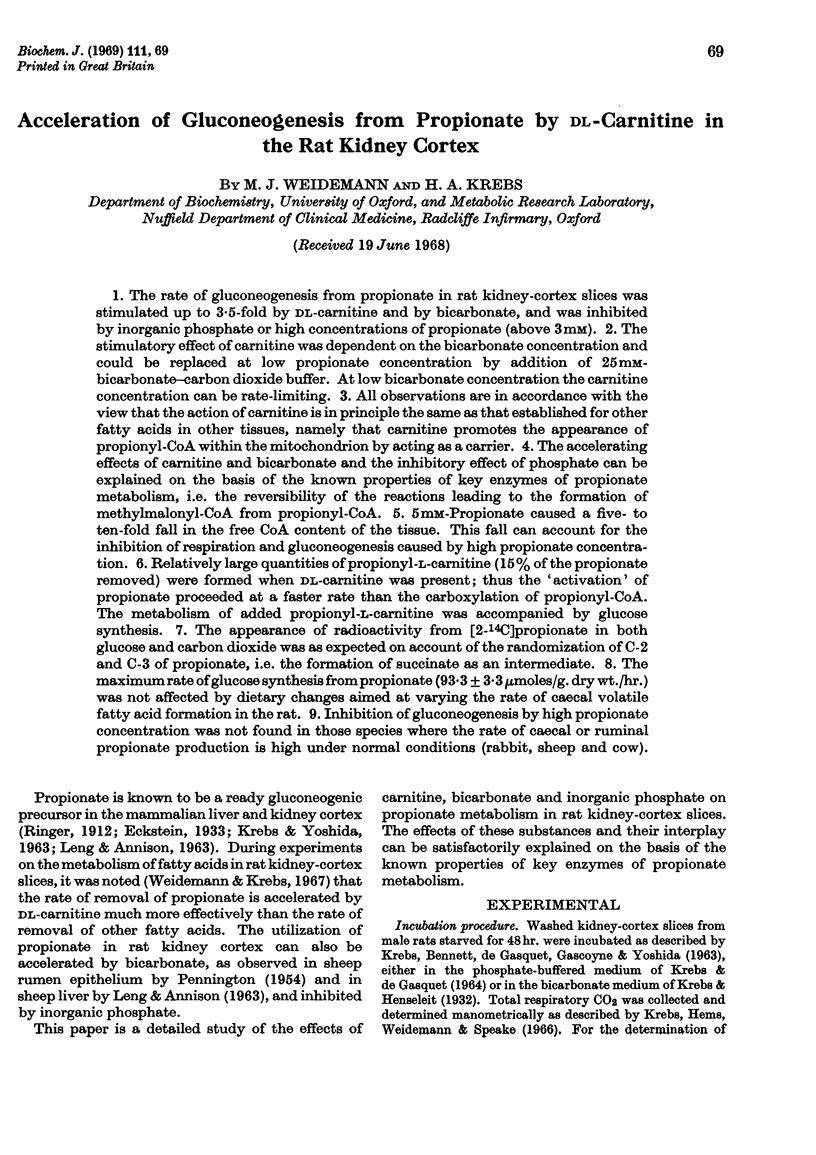

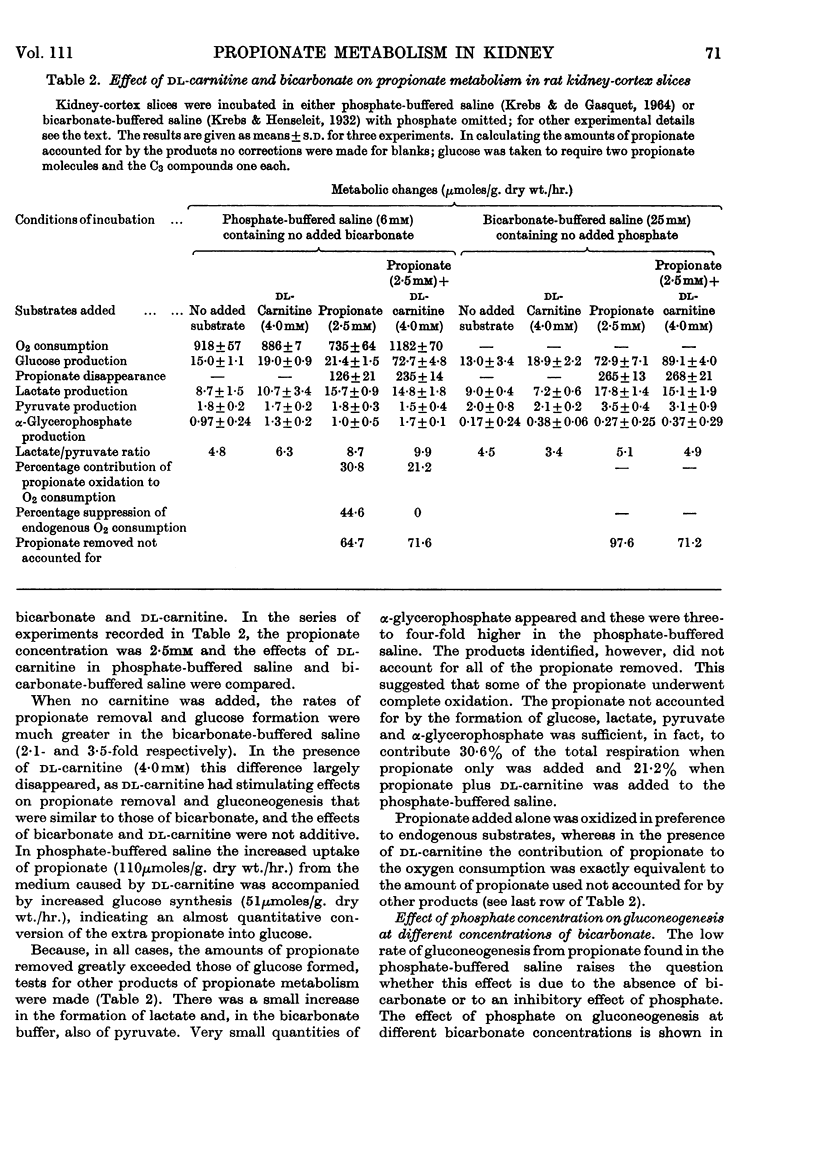
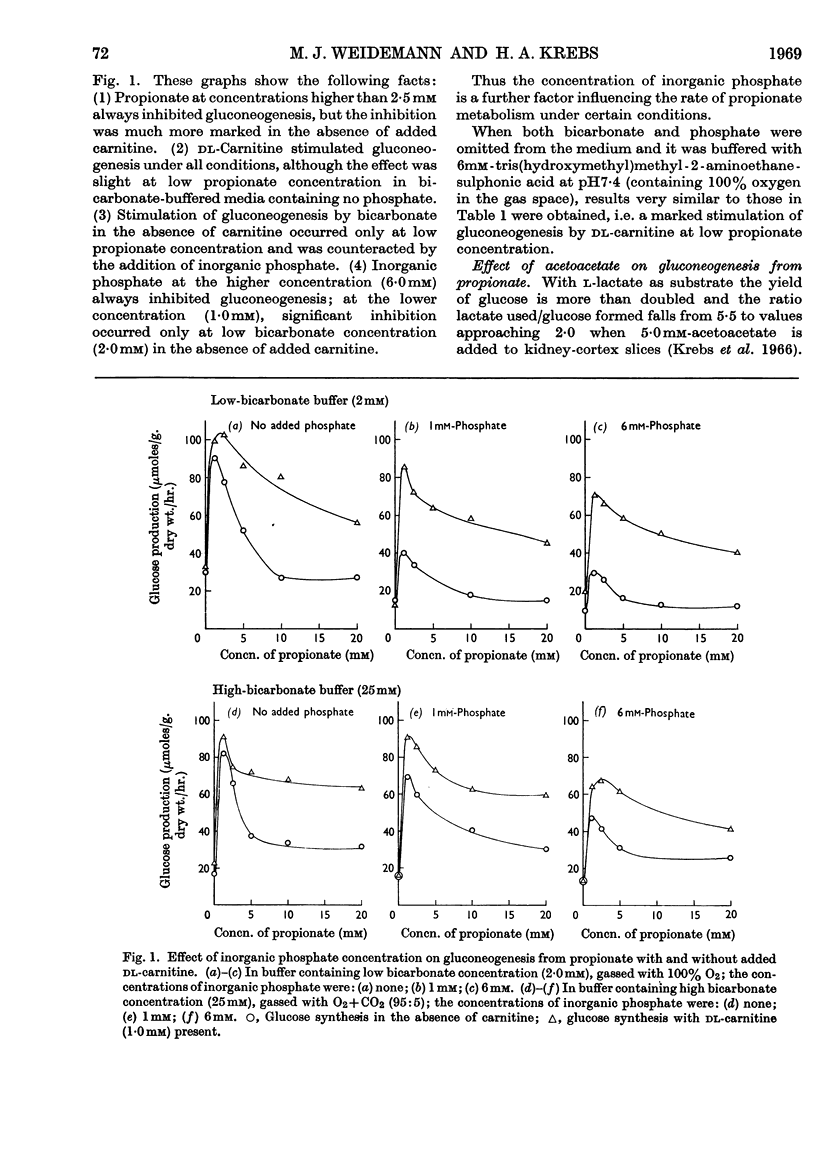
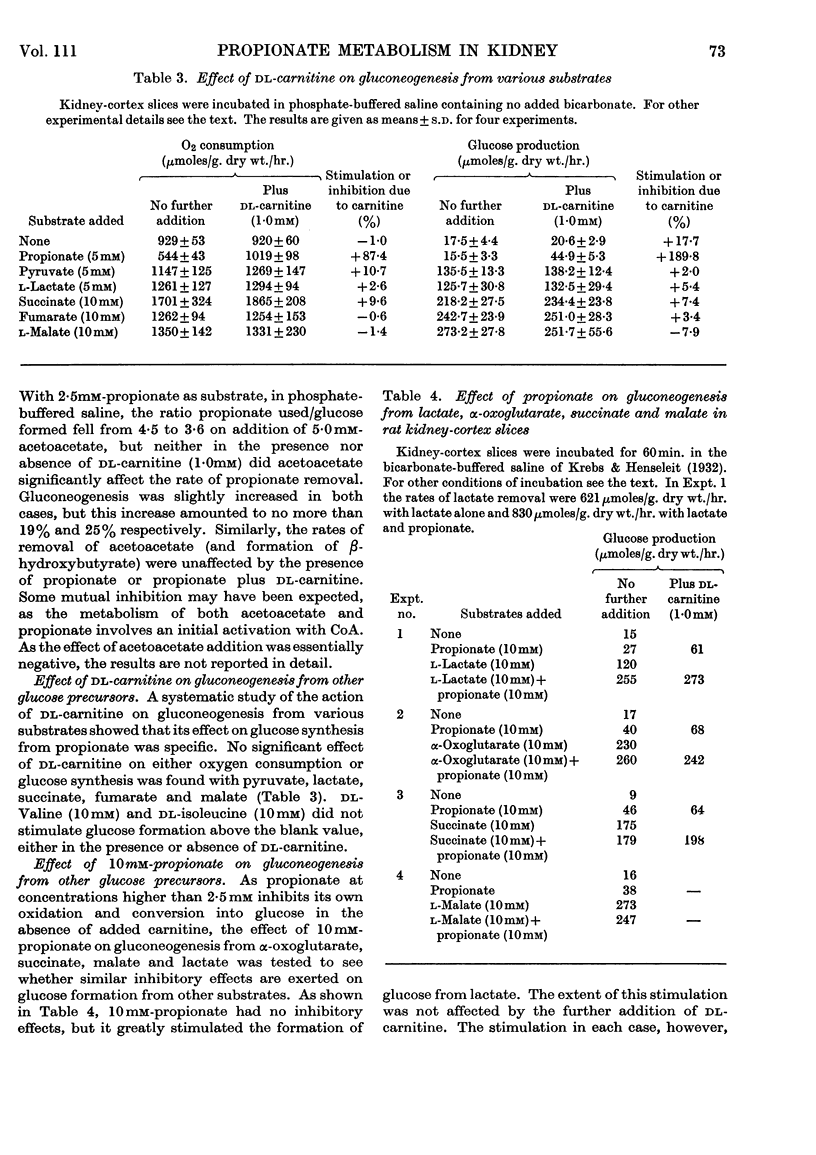

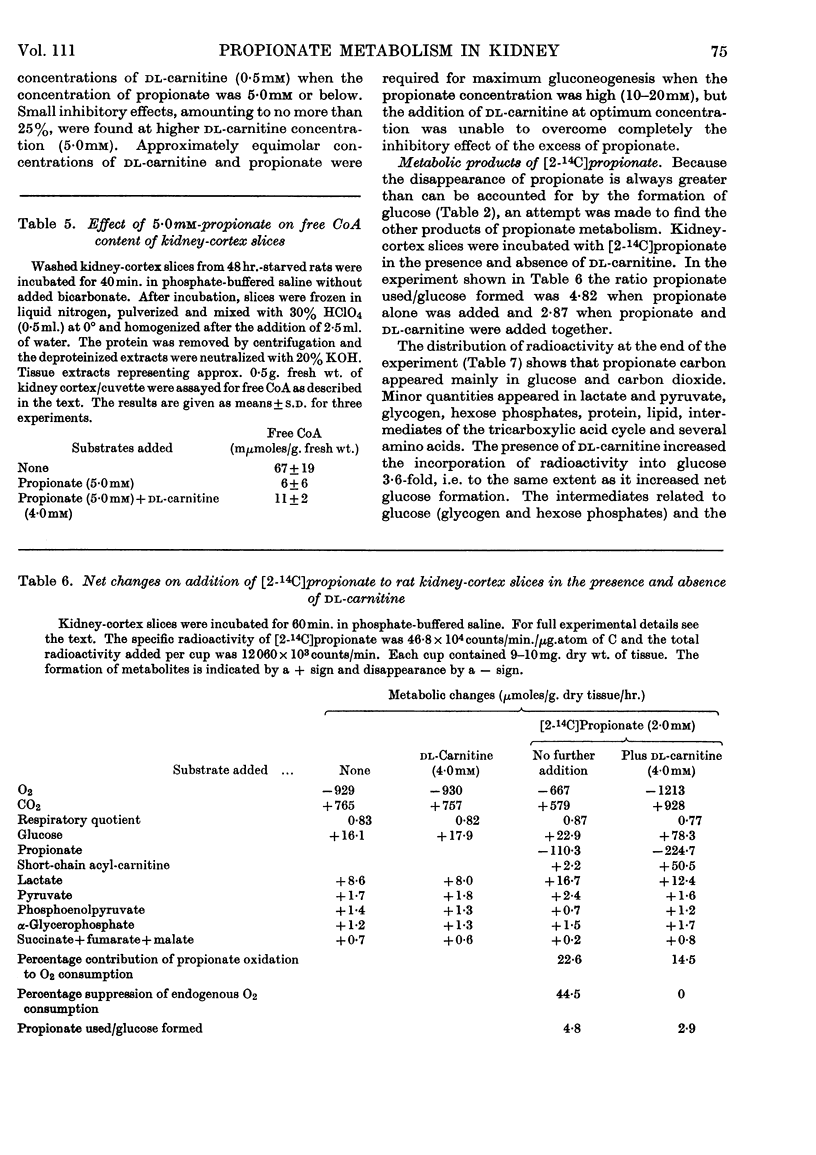
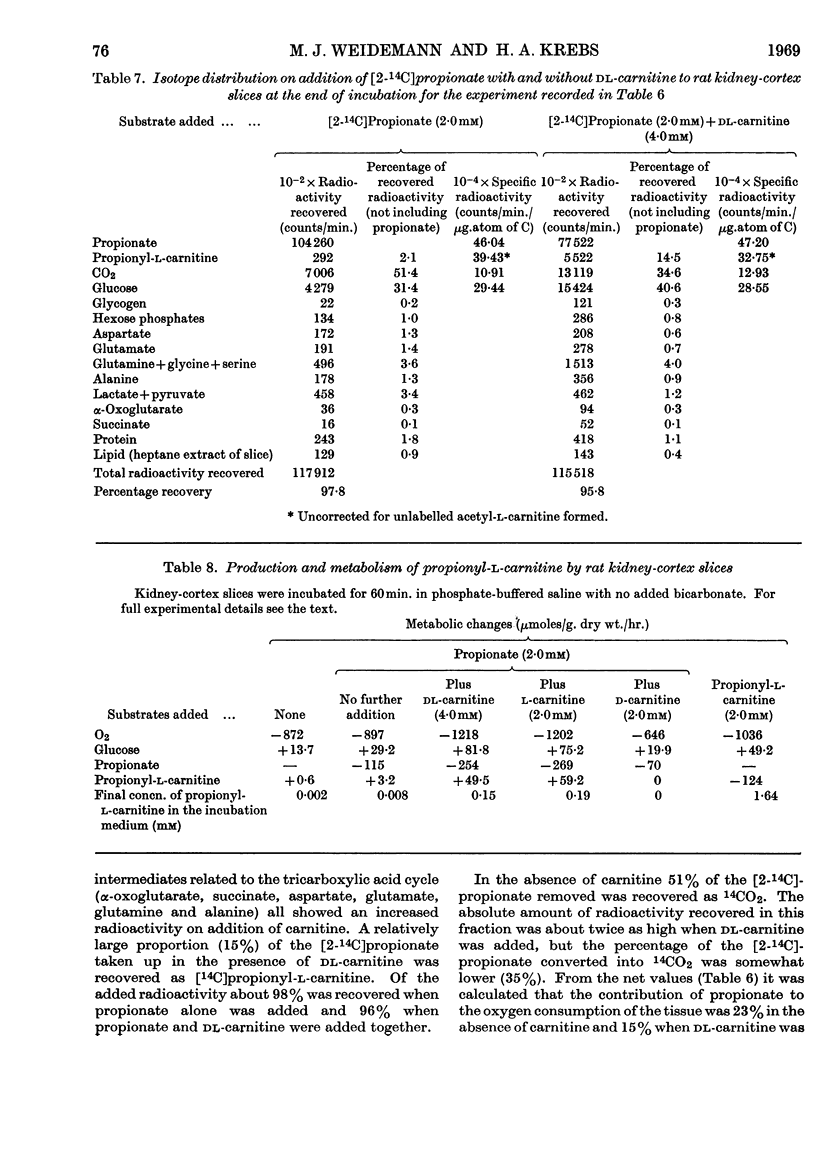

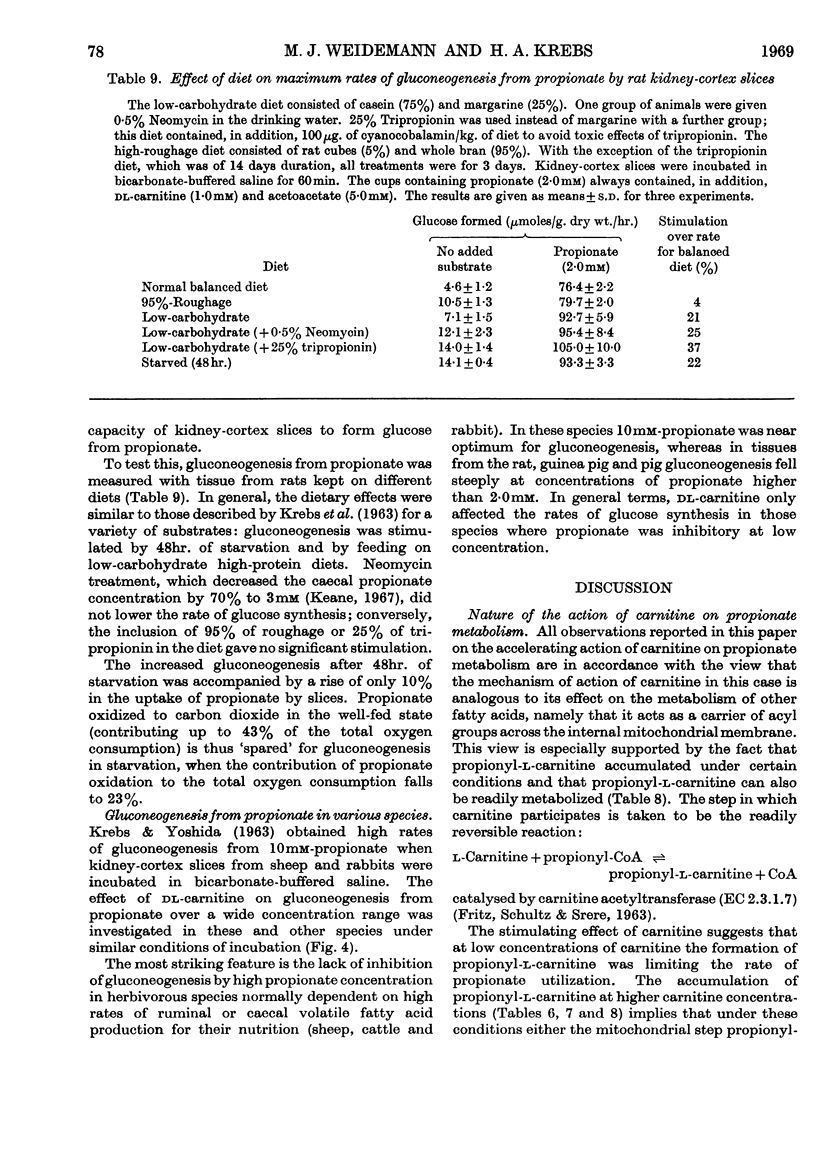
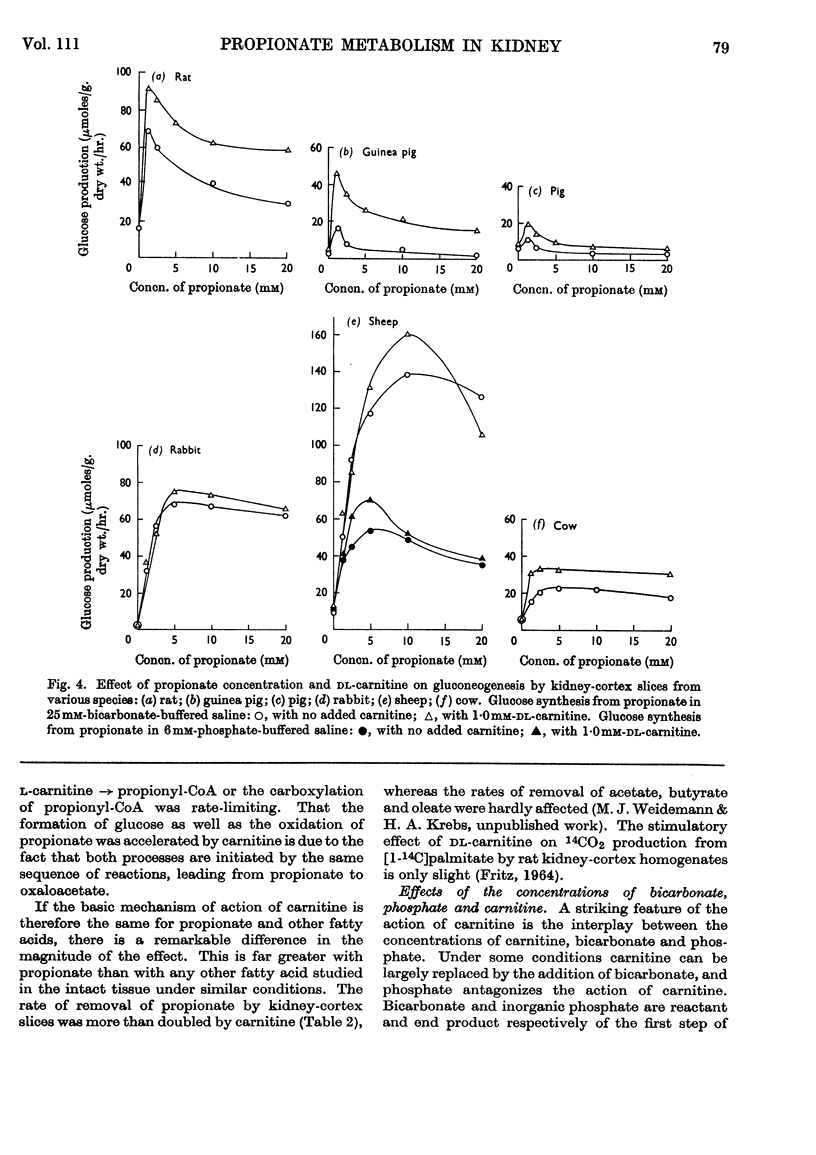

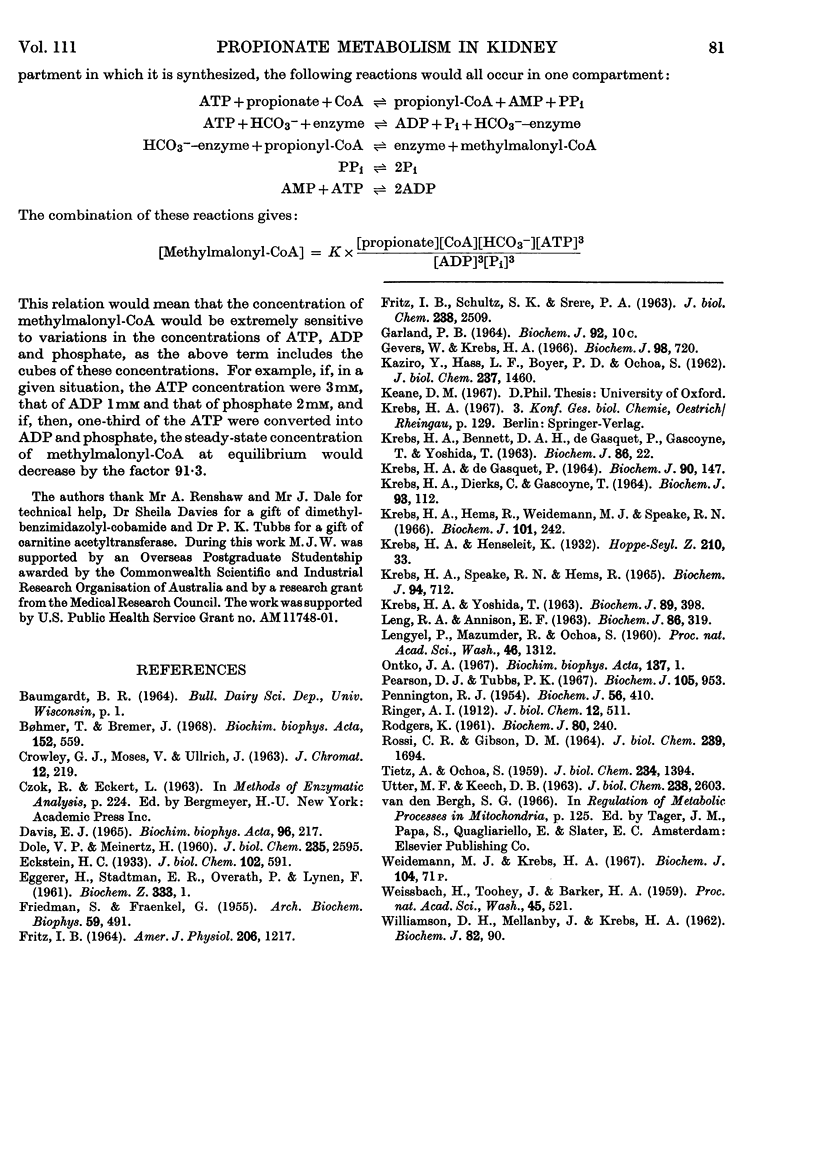
Selected References
These references are in PubMed. This may not be the complete list of references from this article.
- Bohmer T., Bremer J. Propionylcarnitine. Physiological variations in vivo. Biochim Biophys Acta. 1968 May 1;152(3):559–567. doi: 10.1016/0005-2760(68)90096-9. [DOI] [PubMed] [Google Scholar]
- CROWLEY G. J., MOSES V., ULLRICH J. A VERSATILE SOLVENT TO REPLACE PHENOL FOR THE PAPER CHROMATOGRAPHY OF RADIOACTIVE INTERMEDIARY METABOLITES. J Chromatogr. 1963 Oct;12:219–228. doi: 10.1016/s0021-9673(01)83673-6. [DOI] [PubMed] [Google Scholar]
- DAVIS E. J. ON THE OXIDATION OF ACETATE AND PYRUVATE BY GUINEA-PIG HEART SARCOSOMES. Biochim Biophys Acta. 1965 Feb 22;96:217–230. [PubMed] [Google Scholar]
- DOLE V. P., MEINERTZ H. Microdetermination of long-chain fatty acids in plasma and tissues. J Biol Chem. 1960 Sep;235:2595–2599. [PubMed] [Google Scholar]
- FRIEDMAN S., FRAENKEL G. Reversible enzymatic acetylation of carnitine. Arch Biochem Biophys. 1955 Dec;59(2):491–501. doi: 10.1016/0003-9861(55)90515-4. [DOI] [PubMed] [Google Scholar]
- FRITZ I. B. CARNITINE EFFECTS ON PALMITATE-I-C-14 CONVERSION TO CO2 AND GLYCERIDES BY VARIOUS TISSUES. Am J Physiol. 1964 Jun;206:1217–1222. doi: 10.1152/ajplegacy.1964.206.6.1217. [DOI] [PubMed] [Google Scholar]
- FRITZ I. B., SCHULTZ S. K., SRERE P. A. Properties of partially purified carnitine acetyltransferase. J Biol Chem. 1963 Jul;238:2509–2517. [PubMed] [Google Scholar]
- Gevers W., Krebs H. A. The effects of adenine nucleotides on carbohydrate metabolism in pigeon-liver homogenates. Biochem J. 1966 Mar;98(3):720–735. doi: 10.1042/bj0980720. [DOI] [PMC free article] [PubMed] [Google Scholar]
- Glynn I. M., Chappell J. B. A simple method for the preparation of 32-P-labelled adenosine triphosphate of high specific activity. Biochem J. 1964 Jan;90(1):147–149. doi: 10.1042/bj0900147. [DOI] [PMC free article] [PubMed] [Google Scholar]
- KAZIRO Y., HASS L. F., BOYER P. D., OCHOA S. Mechanism of the propionyl carboxylase reaction. II. Isotopic exchange and tracer experiments. J Biol Chem. 1962 May;237:1460–1468. [PubMed] [Google Scholar]
- KREBS H. A., BENNETT D. A., DE GASQUET P., GASQUET P., GASCOYNE T., YOSHIDA T. Renal gluconeogenesis. The effect of diet on the gluconeogenic capacity of rat-kidney-cortex slices. Biochem J. 1963 Jan;86:22–27. doi: 10.1042/bj0860022. [DOI] [PMC free article] [PubMed] [Google Scholar]
- KREBS H. A., SPEAKE R. N., HEMS R. ACCELERATION OF RENAL GLUCONEOGENESIS BY KETONE BODIES AND FATTY ACIDS. Biochem J. 1965 Mar;94:712–720. doi: 10.1042/bj0940712. [DOI] [PMC free article] [PubMed] [Google Scholar]
- KREBS H. A., YOSHIDA T. RENAL GLUCONEOGENESIS. 2. THE GLUCONEOGENIC CAPACITY OF THE KIDNEY CORTEX OF VARIOUS SPECIES. Biochem J. 1963 Nov;89:398–400. doi: 10.1042/bj0890398. [DOI] [PMC free article] [PubMed] [Google Scholar]
- Krebs H. A., Dierks C., Gascoyne T. Carbohydrate synthesis from lactate in pigeon-liver homogenate. Biochem J. 1964 Oct;93(1):112–121. doi: 10.1042/bj0930112. [DOI] [PMC free article] [PubMed] [Google Scholar]
- Krebs H. A., Hems R., Weidemann M. J., Speake R. N. The fate of isotopic carbon in kidney cortex synthesizing glucose from lactate. Biochem J. 1966 Oct;101(1):242–249. doi: 10.1042/bj1010242. [DOI] [PMC free article] [PubMed] [Google Scholar]
- LENG R. A., ANNISON E. F. Metabolism of acetate, propionate and butyrate by sheep-liver slices. Biochem J. 1963 Feb;86:319–327. doi: 10.1042/bj0860319. [DOI] [PMC free article] [PubMed] [Google Scholar]
- Lengyel P., Mazumder R., Ochoa S. MAMMALIAN METHYLMALONYL ISOMERASE AND VITAMIN B(12) COENZYMES. Proc Natl Acad Sci U S A. 1960 Oct;46(10):1312–1318. doi: 10.1073/pnas.46.10.1312. [DOI] [PMC free article] [PubMed] [Google Scholar]
- PENNINGTON R. J. The metabolism of short-chain fatty acids in the sheep. II. Further studies with rumen epithelium. Biochem J. 1954 Mar;56(3):410–416. doi: 10.1042/bj0560410. [DOI] [PMC free article] [PubMed] [Google Scholar]
- Pearson D. J., Tubbs P. K. Carnitine and derivatives in rat tissues. Biochem J. 1967 Dec;105(3):953–963. doi: 10.1042/bj1050953. [DOI] [PMC free article] [PubMed] [Google Scholar]
- RODGERS K. Estimation of succinic acid in biological materials. Biochem J. 1961 Aug;80:240–244. doi: 10.1042/bj0800240. [DOI] [PMC free article] [PubMed] [Google Scholar]
- ROSSI C. R., GIBSON D. M. ACTIVATION OF FATTY ACIDS BY A GUANOSINE TRIPHOSPHATE-SPECIFIC THIOKINASE FROM LIVER MITOCHONDRIA. J Biol Chem. 1964 Jun;239:1694–1699. [PubMed] [Google Scholar]
- TIETZ A., OCHOA S. Metabolism of propionic acid in animal tissues. V. Purification and properties of propionyl carboxylase. J Biol Chem. 1959 Jun;234(6):1394–1400. [PubMed] [Google Scholar]
- UTTER M. F., KEECH D. B. PYRUVATE CARBOXYLASE. I. NATURE OF THE REACTION. J Biol Chem. 1963 Aug;238:2603–2608. [PubMed] [Google Scholar]
- WILLIAMSON D. H., MELLANBY J., KREBS H. A. Enzymic determination of D(-)-beta-hydroxybutyric acid and acetoacetic acid in blood. Biochem J. 1962 Jan;82:90–96. doi: 10.1042/bj0820090. [DOI] [PMC free article] [PubMed] [Google Scholar]
- Weidemann M. J., Krebs H. A. An effect of carnitine on gluconeogenesis from propionate in kidney cortex. Biochem J. 1967 Sep;104(3):71P–71P. [PMC free article] [PubMed] [Google Scholar]
- Weissbach H., Toohey J., Barker H. A. ISOLATION AND PROPERTIES OF B(12) COENZYMES CONTAINING BENZIMIDAZOLE OR DIMETHYLBENZIMIDAZOLE. Proc Natl Acad Sci U S A. 1959 Apr;45(4):521–525. doi: 10.1073/pnas.45.4.521. [DOI] [PMC free article] [PubMed] [Google Scholar]


